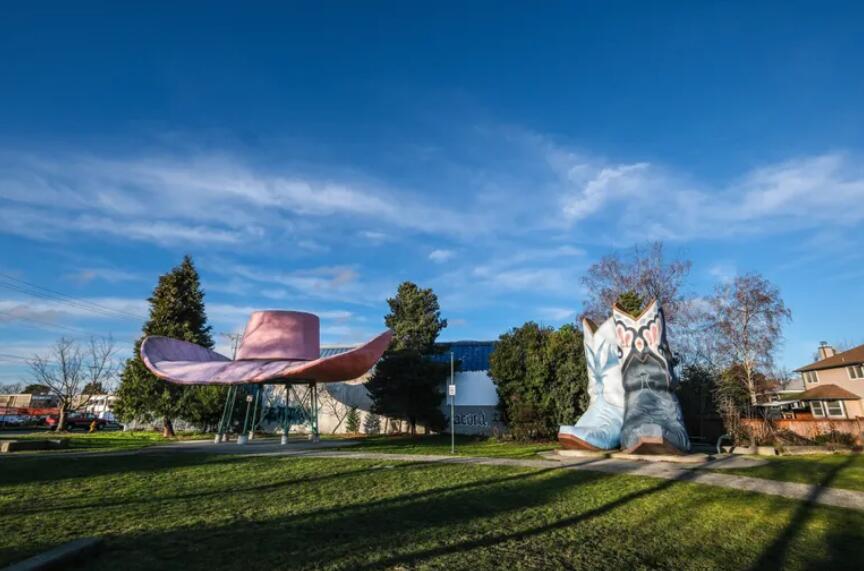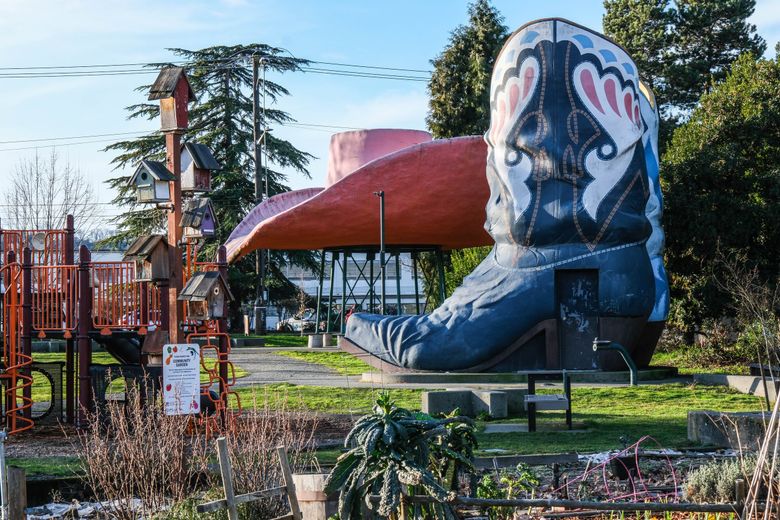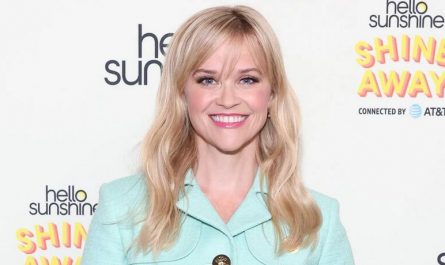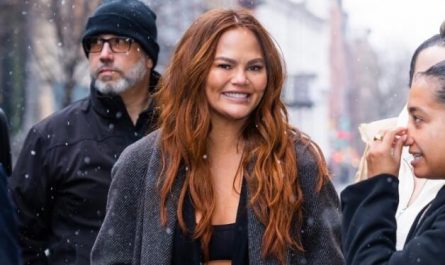THE FIRST THING you notice about Oxbow Park’s giant Hat n’ Boots sculptures, besides their existence, is that the boots don’t match. One is dark blue and the other light blue, and while they are complementary, these magnificent, artistically rumpled mega-creations are not exactly a matched pair, and they don’t quite coordinate with the vivid red hat that sits alongside them, comprising the roof of the park’s covered picnic shelter. But on a gray Seattle afternoon, the cartoonishly bright monuments pop into your field of vision like a Technicolor fever dream, simultaneously whimsical and bewildering, and one wonders where the giant cowboy who wears them has gone, thus unshod and unhatted, on such a rainy day.
Oxbow Park is tucked away at 6430 Corson Ave. S., among the deceptively utilitarian maze of Georgetown’s warehouses and industrial parks, emerging like a mirage across from a WSDOT parking lot. The opposing side of Oxbow, however, abuts a neighborhood just as whimsical as the park, with gingerbread houses with plant-bedecked porches and even one home with a cylindrical tower where, one imagines, the neighborhood princess sleeps the days away.
The name Oxbow refers to lost geography; the area sits on what once was an old “oxbow” of the Duwamish River, defined as a U-shaped slip of riparian wetland, sometimes called a meander, that gets cut off from the main body of water. This area, known at the turn of the century as Oxbow Bend, was subsequently filled in and developed.
The Hat n’ Boots sculptures themselves originally were part of a gas station called Premium Tex, located a few blocks away on Corson Avenue South, where it intersected with East Marginal Way. It was designed by commercial artist Lewis Nasmyth (1923-2016) and built in 1954, when Westerns ruled the airwaves and the cowboy was the symbol of America. The hat was the roof of the gas station office, and the boots were bathrooms, the light blue one for “cowgirls” and the slightly larger, dark blue one for “cowboys.” (The doors still exist on either side, but the boots are no longer bathrooms, so, alas, your dreams of peeing in a giant boot must for now go unsatisfied.)
Like any great roadside attraction, they have had their cinematic moments as well, featured in the opening credits of “National Lampoon’s Vacation.” These structures were billed the “largest hat and boots in America,” a distinction they might in fact still hold (although the world’s largest boots — boots only, mind you — are in San Antonio, measuring 35 feet high, and one can only speculate what graces the head of the cowboy that wears them).
The gas station sold Texaco gas, hence the oddly displaced southwestern theme, and it was abandoned by 1988, but the neighborhood was loathe to demolish what was, by then, a beloved landmark, so the state reportedly offered to sell the structures for the princely sum of $1 to anyone willing to move them elsewhere. Finally, in 2003, the Georgetown Community Council paid that dollar (and several thousand more for the actual moving), and the hat and boots were relocated that year to the wee 1-acre plot of land that is Oxbow Park.
The park itself was spearheaded by the community in Georgetown and designed by landscape artist and then-resident of Georgetown Laura Haddad and landscape architect Nate Cormier, formerly of Jones and Jones. There is much more to the park than just Hat n’ Boots, including a sprawling community P-Patch with a merry little green shed and stack of little bijou birdhouses, and during Seattle’s relatively short spurt of summer, the place is green with neighborhood produce.
Even during the great drizzle, it holds a Hobbitlike charm, and a curious visitor will notice all kinds of playful Industrial Cowboy-themed Easter eggs hidden around the various structures abutting the hat and boots: mysterious details such as recycled steel artifacts and chains embedded in the concrete walls, and a bizarre mound, rising like a tell or a nipple in the earth that, in the British Isles, might contain a Viking ship or Celtic burial chamber (according to Haddad, these were put there simply to give a flat field some variations in terrain).
One could ask the giant cowboy about them, I suppose, if he ever comes back for his accessories.




